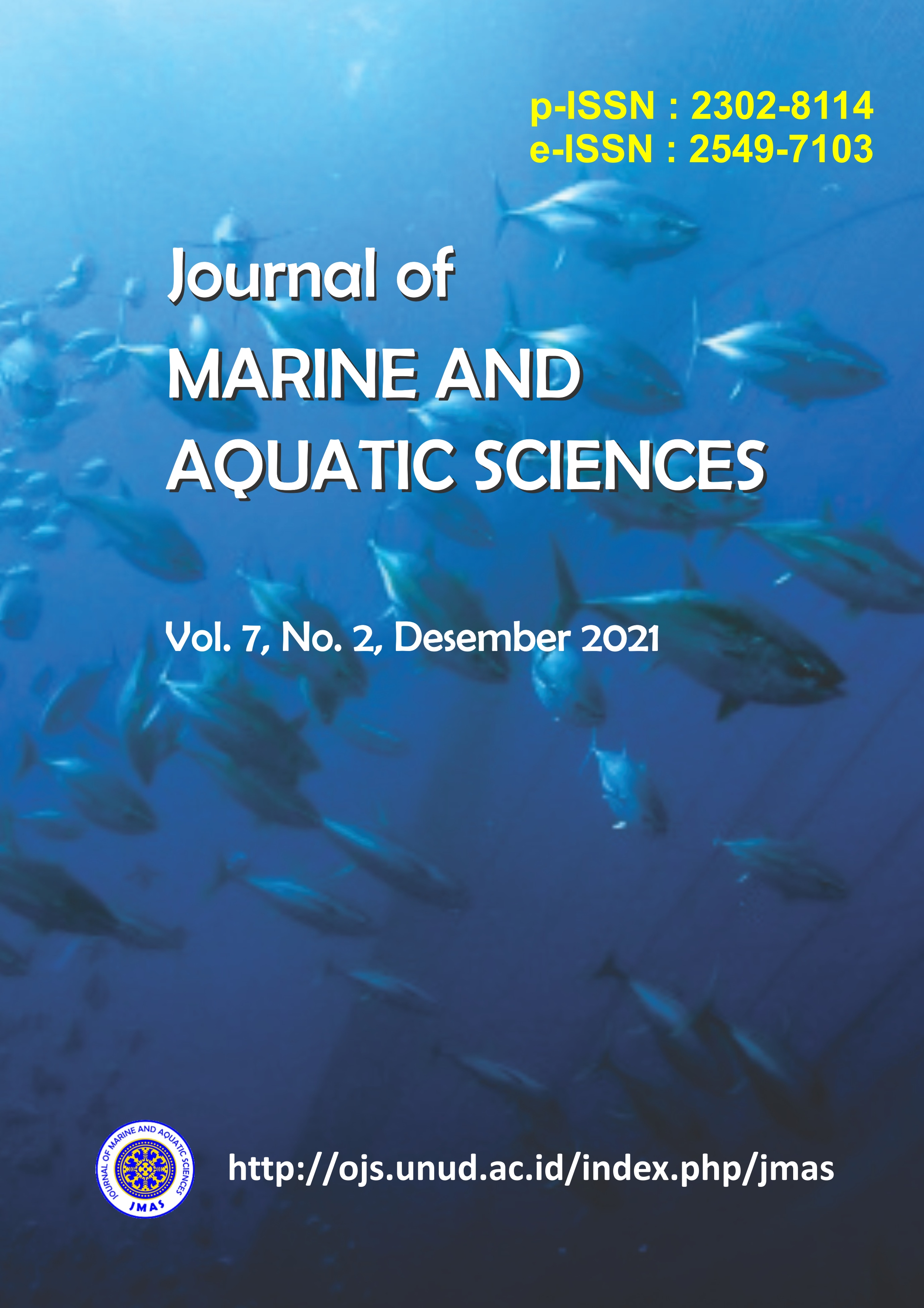Perbandingan Morfometrik dan Meristik Lamun Cymodoceae serrulata di Perairan Sanur dan Tanjung Benoa, Bali
Abstract
Cymodoceae serrulata is a type of seagrass that has a slender and round-toothed shape on the tips of leaves that can live in a variety of substrates ranging from rocking to muddy sand. Morphometrics and meristic can describe the environmental conditions of living seagrasses which can be seen from leaf morphology, stem morphology, rhizoma morphology and root morphology. Morfometrics is a measurement to determine the quantitative morphology of an organism while meristic is a calculation of the number of parts of an organism. This research was conducted in January-April 2019 using a purposive sampling method at 8 observation stations in the waters of Sanur and Tanjung Benoa. Data were analyzed by sturges criteria and principal componen analysis. Based on the results of the study, leaf length ranged from 13.4-246.6 mm, leaf width ranged from 3-18.5 mm, stem length ranged from 1-130.3 mm, root length ranged from 10.1-134.1 mm, rhizoma length ranged from 10.1-78.8 mm, rhizoma diameter ranged from 1.2-3.73 mm, the diameter of the leaf stalk ranged from 1.11-3.63 mm and the number of leaves ranged from 2-5 strands. The principal component analysis showed that texture of the substrate (sand, dust, and clay) that most influences the morphometric-meristic seagrass Cymodoceae serrulata is the texture of dust and clay texture. Where the dust texture affects morphometrics-meristik such as the length of the leaf, leaf width, stem length, rhizoma length, root length and number of leaves. While of the stem diameter and rhizoma diameter and root length are influenced by clay texture.
Downloads

This work is licensed under a Creative Commons Attribution 3.0 International License.
Copyright 2012 - 2023 Journal of Marine and Aquatic Sciences (JMAS)
Published by Fakultas Kelautan dan Perikanan Universitas Udayana, Denpasar, Bali, Indonesia
JMAS (p-ISSN 2302-8114; e-ISSN 2549-7103)


